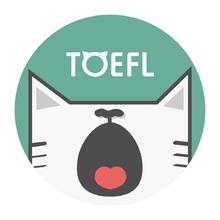 返回
教育头条
返回
教育头条

托福口语TPO51答案分享 托福考试
下面小编跟大家一起了解托福口语TPO51答案分享,希望对大家的学习有所帮助。
Task2
I don't think that eighteen-year-olds are mature enough to vote. Well, normally eighteen-year-old people just graduate from high school. Since such young people have spent a long time at school learning the theoretical theories, they do not have enough practical experience. Also, they might fail to consider issues comprehensively. For example, the young might be willing to vote for the minimum wage laws which set the lowest hourly rate an employer should legally pay the workers without realizing that the laws might discourage employers from hiring more staff.
Task3
The university decides to build a parking lot near humanities building. Because the existing parking lot cannot meet people's needs. Also, it's convenient to clear away trees to build a lot. The woman disagrees with this for two reasons. Firstly, students can find many parking lots nearby. In fact, they can find parking lots a few blocks away. Secondly, it is unreasonable to clear away trees because it's one of the only wooded areas left on campus. Students really enjoy sitting in the shade to study.
Task4
The reading passage describes image advertising, which means that companies rely on the use of images and words to advertise products in order to increase sales. The professor takes a cookie company as an example. The company uses the image of an animal character, a bear, in advertising. The picture of the bear appears in the cookie boxes and TV commercials. Also, the cookies are shaped like the bear. Due to the bear, children, the main cookie consumers, find the cookies tempting. Although bears have nothing to do with cookies, the image of the bear stays in people's minds. The sales of the bear shaped cookies are awesome.

Task6
The professor describes two ways by which display behaviors help animals maintain group unity. One way is by the use of threatening display behaviors, which are displayed to send a warning but not to cause fights. For example, when two monkeys compete for the same food item, one monkey tends to stare at the other in order to drive the rival away. Normally, the winner winds up enjoying the food alone and conflicts do not break out. The other way is by the use of friendly display behaviors. For example, two animals involved in a fight over the same food item show friendly behaviors to each other after the conflict in order to restore unity.
Task2
I don't think that eighteen-year-olds are mature enough to vote. Well, normally eighteen-year-old people just graduate from high school. Since such young people have spent a long time at school learning the theoretical theories, they do not have enough practical experience. Also, they might fail to consider issues comprehensively. For example, the young might be willing to vote for the minimum wage laws which set the lowest hourly rate an employer should legally pay the workers without realizing that the laws might discourage employers from hiring more staff.
Task3
The university decides to build a parking lot near humanities building. Because the existing parking lot cannot meet people's needs. Also, it's convenient to clear away trees to build a lot. The woman disagrees with this for two reasons. Firstly, students can find many parking lots nearby. In fact, they can find parking lots a few blocks away. Secondly, it is unreasonable to clear away trees because it's one of the only wooded areas left on campus. Students really enjoy sitting in the shade to study.
Task4
The reading passage describes image advertising, which means that companies rely on the use of images and words to advertise products in order to increase sales. The professor takes a cookie company as an example. The company uses the image of an animal character, a bear, in advertising. The picture of the bear appears in the cookie boxes and TV commercials. Also, the cookies are shaped like the bear. Due to the bear, children, the main cookie consumers, find the cookies tempting. Although bears have nothing to do with cookies, the image of the bear stays in people's minds. The sales of the bear shaped cookies are awesome.

Task6
The professor describes two ways by which display behaviors help animals maintain group unity. One way is by the use of threatening display behaviors, which are displayed to send a warning but not to cause fights. For example, when two monkeys compete for the same food item, one monkey tends to stare at the other in order to drive the rival away. Normally, the winner winds up enjoying the food alone and conflicts do not break out. The other way is by the use of friendly display behaviors. For example, two animals involved in a fight over the same food item show friendly behaviors to each other after the conflict in order to restore unity.
以上就是教育宝头条带来的托福口语TPO51答案分享 托福考试详细介绍,想要查看更多托福资讯,敬请关注教育宝头条,也可以加我微信18560125702,我会解答你的学习问题。返回教育宝头条
【免责声明】本文仅代表作者本人观点,与教育宝无关。教育宝对文中陈述、观点判断保持中立,不对所包含内容的准确性、可靠性或完整性提供任何保证。请读者仅作参考,特此声明!





